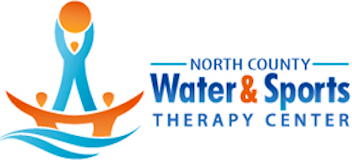Do you have shoulder pain with:
Reaching Overhead?
Reaching into the Back Seat?
Reaching Behind Your Back?
While you Sleep?
Combing/ brushing your hair?
You are not alone…..
According to the American Academy of Orthopedic Surgeons, 7.5 Million Americans see their doctor for shoulder pain and problems each year. Some of these injuries could be prevented. Here are a few basic rules to help prevent shoulder injuries and costly doctor visits.
1. Proper conditioning: The shoulder complex is inherently designed for movement. This leaves the muscles as the primary source of stability for the area. Equalizing strength and flexibility of these muscles is the key to proper shoulder mechanics. This means, basic strengthening in conjunction with physical activity or sport is essential in preventing a breakdown of the shoulder mechanism and injury. Call 858-675-1133 and we will send you our healthy shoulder exercise routine.
2. Warm-up: It is important to prepare the tissues before pushing them to the maximum. 10 minutes of cardiovascular exercise to increase blood flow and 10 minutes of stretching to prevent tears is recommended prior to high intensity upper body activity.
3. Proper Posture: Good alignment is needed for the shoulder to work efficiently. When you slouch the joint becomes compressed, increasing the risk of impingement of soft tissues and pain.
4. Correct Technique: Whether you are a tennis player, golfer, swimmer, throwing athlete or just weight training for health, correct form and mechanics are essential to peak performance and minimizing stress to the shoulder.
The shoulder is often referred to as a “ball and socket” joint. In reality, the “socket” portion of the joint is very shallow, relying on muscles and a ring of cartilage, called the labrum, to provide much of the joint’s stability. This design allows for a large amount of movement but when the movement becomes impaired injuries and pain occur. Because our bodies do not move in isolation, the neck and upper back also influence how we move our shoulder and arm. Many components come together to allow us the freedom to reach, lift, carry and play sports without injury. It is no wonder so many Americans have shoulder pain complaints.
The most common causes of shoulder pain are:
Rotator cuff
(4 muscles in your shoulder attaching your upper arm to the shoulder blade)
These muscles play a large role in stabilizing your shoulder joint (referred to by medical professionals as the glenohumeral joint). In addition to helping you rotate your arm these muscles are essential in keeping the ball in the socket with overhead motions.
Shoulder blade
17 different muscles attach to your shoulder blade affecting movement and positioning. When these muscles are out of balance the “ball and socket” fails to move in a coordinated pattern, leading to narrowing of the space at the top of the shoulder and causing pain and limited use of the arm often referred to as impingement.
Neck and Upper Back
With arm movement, our ribcage and upper back (also called the thoracic spine) must also move. With age, poor posture, long times at the computer or sitting, these areas can become stiff. When given a choice, the body will follow the path of least resistance and the shoulder will pay the price for the stiffness in surrounding areas.
What does successful physical therapy treatment for shoulder pain look like?
First a through physical therapy examination to determine the cause of your shoulder pain. Once determined the best outcomes are from hands on physical therapy combined with the right stretching and strengthening exercises specific to the cause of your shoulder pain.
Goals of therapy treatment is to:
Give relief by correcting the cause of your pain.
Improve your strength and movement.
Speed up the healing process.
Prevent your shoulder from getting worse.
It is important to remember we have three options when dealing with shoulder pain.
1. Ignore it = live with the pain and hope it goes away (this is the number one mistake shoulder pain suffers make)
2. Alter it = take medications, get injections this helps with pain but does not correct the underlying cause of the pain.
3. Handle it = Deal with the cause of your pain, return to pain-free motion.
Physical Therapy can help you handle your shoulder pain by correcting the cause of your pain.
If you have shoulder pain with moving your arm, call us at 858-675-1133 stop ignoring the pain or avoiding activities because of pain, and work on handling the cause of the problem to get back to doing the things you enjoy.
